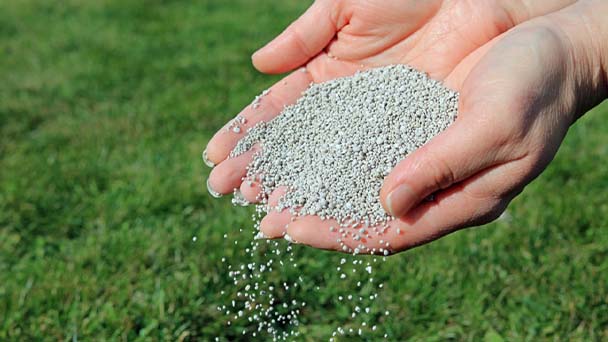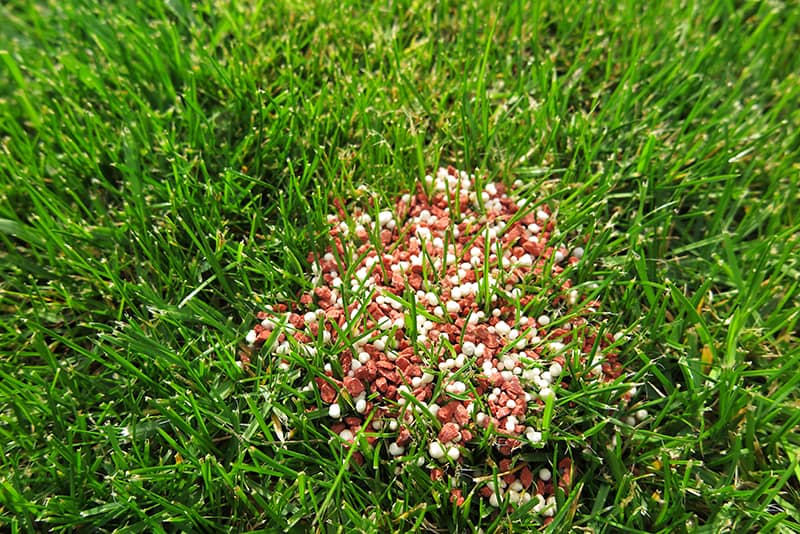Recommendations about organic lawn fertilizer
Written by Joy
Sep 28 2020

Organic lawn fertilizer promotes healthy green grass while nurturing human life, wildlife, soil, and waterways in your community. Do you know that as part of a well-maintained landscape, lush green lawn grass increases the value of your home by 15% to 20%.

Chemical fertilizer labels usually include three numbers (for example, 20-10-10), which represent the three main nutrients: nitrogen (N), phosphorus (P) and potassium (K). You'd better apply three or more times a year, this type of fertilizer quickly grows the lawn, but has no effect on the soil below because the chemicals will eventually be leached.
On the other hand, organic lawn fertilizer almost always contain nutrients other than N, P and K. These fertilizers come from plant and animal sources, while promoting soil health, slowly release nutrients to feed grass. Popular plant sources of organic fertilizers include alfalfa, cottonseed meal and seaweed. Animal sources include bone meal, bat droppings and manure from chickens, cattle and horses.
So what is the best organic lawn fertilizer on the lawn? There is no one right answer, because choosing a specific product requires knowing the composition of your soil. It is easy to pass a simple DIY soil test. For example, if the test results show that your soil is low in potassium, you will need to find fertilizers that increase specific nutrients.
If you don't want to buy organic lawn fertilizer, you can try to dress up your lawn with DIY compost. You should learn how to use organic compost as a lawn fertilizer for food waste, broken leaves and grass clippings.
Spring and autumn are the right times to improve the soil structure, which helps the grass roots make the best use of the food you will provide through fertilizer in the future. If you are not sure what your soil needs, apply a thin layer of organic compost on top. This will balance the pH and improve the water retention of sandy soil and drainage in clay.

Choose the right organic lawn fertilizer
As a homeowner who believes in organic lawn care, you need to maintain the soil, not the plants. In other words, consider the grass'response to fertilizer application. Considering the impact of your choice of fertilizer on microorganisms and large organisms (such as earthworms) that keep the soil healthy is necessary, as well as groundwater pollution and other environmental issues.Chemical fertilizer labels usually include three numbers (for example, 20-10-10), which represent the three main nutrients: nitrogen (N), phosphorus (P) and potassium (K). You'd better apply three or more times a year, this type of fertilizer quickly grows the lawn, but has no effect on the soil below because the chemicals will eventually be leached.
On the other hand, organic lawn fertilizer almost always contain nutrients other than N, P and K. These fertilizers come from plant and animal sources, while promoting soil health, slowly release nutrients to feed grass. Popular plant sources of organic fertilizers include alfalfa, cottonseed meal and seaweed. Animal sources include bone meal, bat droppings and manure from chickens, cattle and horses.
So what is the best organic lawn fertilizer on the lawn? There is no one right answer, because choosing a specific product requires knowing the composition of your soil. It is easy to pass a simple DIY soil test. For example, if the test results show that your soil is low in potassium, you will need to find fertilizers that increase specific nutrients.
If you don't want to buy organic lawn fertilizer, you can try to dress up your lawn with DIY compost. You should learn how to use organic compost as a lawn fertilizer for food waste, broken leaves and grass clippings.
Commercial organic lawn fertilizer
There are so many tags to read, so there is not much time. You could find these commercial organic fertilizers online and in local stores run by retailers across the country to shorten your shopping time. These products can also be transported in local nurseries, lawn and garden centers.Timing is everything
You are able to start improving the lawn by aerating before fertilizing. Since aeration can cause root death, it can only be done in spring or autumn, when the lawn will not be stressed by the hot weather. Unlike the vegetable garden, the lawn is squeezed by the flow of people. Aeration of the lawn solves the compaction problem by cutting many small holes in the grass to reach the soil. By cutting this thatch (the top layer of stems, roots and dead organic matter), you can improve air circulation and water absorption.Spring and autumn are the right times to improve the soil structure, which helps the grass roots make the best use of the food you will provide through fertilizer in the future. If you are not sure what your soil needs, apply a thin layer of organic compost on top. This will balance the pH and improve the water retention of sandy soil and drainage in clay.
When should you fertilize your lawn?
When a slow-release fertilizer is applied, nitrogen is gradually produced; in this way, your grass can use it all summer. If your grass is green and not under drought pressure, you could consider applying organic fertilizer for the second time in early July. Fertilizing for the last time in the early autumn is proper. The final application will allow your grass to store nutrients in its roots, which means faster greening and thicker growth in the following spring.Fertilize correctly
If you switch to organic lawn care after using traditional chemicals and fertilizers, you should remember that the appearance will be slower than you are used to. As you strive to make your lawn safer for your home and community ecosystem, you’d better keep the following tips in mind.Wait patiently
Organic lawn fertilizer does not make the lawn green like traditional fertilizers. Organic fertilizers contain complex nitrogen compounds. Soil microorganisms slowly decompose compounds and make nitrogen-the element responsible for greening lawns-available to plant roots. This process takes time.Follow label instructions
Most organic fertilizers contain phosphorus, which may pollute groundwater. You'd better fertilize as directed and always remove the fertilizer from solid surfaces to avoid letting the fertilizer enter the water body.Pairing organic lawn fertilizer with natural lawn care
Combined with the practice of organic lawn care, organic lawn fertilizer is more effective and safer for the environment, and it does not require more work compared to traditional lawn care. You can use the following tips to guide your work.Limit irrigation
You should water the lawn thoroughly only when drought stress is obvious, noting that the lawn looks blue-gray, or looking for visible footprints after someone walks past it. You can also save water by letting the lawn sleep. If you must have a green lawn, early morning water. Cool grass can survive for several weeks without water.Mowing 3 to 4 inches
You'd better never cut grass shorter than 3 inches, because cutting too short will put extra pressure on your lawn. This is because short grasses have a correspondingly short root system, which increases the demand for food and water and promotes the growth of weeds. When mowing any one, you’d better not remove more than one-third of the leaves.Practice prevention
The best way to avoid weeds, pests and fungal diseases is to mowing, watering and fertilizing to promote a healthy lawn. Turf-grass with deep roots, adequate and consistent sources of nutrients, and regular mowing are usually able to resist any pests and diseases that try to attack it. Conscious lawn management goes a long way in preventing problems, and it gives you more time to enjoy your lawn.Latest Updated
- Benefits of Bugleweed - 7 Science-backed Health Benefits
- Bugleweed Dangers & Side Effects - Is It Poisonous?
- How to Plant Evergreen Trees - What You Should Know
- When to Plant Evergreens - Grow Guide for Evergreen Trees
- 12 Wonderful Evergreen Shrubs for Your Garden
- 12 Popular Evergreen Plants with Pictures for Beginners
- When And How To Prune A Lilac Bush Like a Pro
- How to Grow & Care for Lilac Vine (Hardenbergia Violacea)
- Japanese Lilac Tree (Syringa Reticulata) Care & Propagation Guide
- Shumard Oak Pros and Cons - What to Know
Popular Articles
- Winter maintenance of Antirrhinum Majus
- How to Grow Terminalia Mantaly Tree
- How to Grow and Care for Crossostephium Chinense
- How to grow Antirrhinum Majus in spring
- Peristeria Elata (Dove Orchid) Profile: Info & Care Guide
- Underwatered Snake Plant (Sansevieria Trifasciata) - Signs And How To Fix
- How to Care for Brazilian Jasmine Plant (Mandevilla Sanderi)
- How to Grow & Care for Graptopetalum Purple Delight in Summer
- Rosa Chinensis (China Rose): Plant Growing & Care Tips
- How to Care for Baby Sun Rose (Aptenia Cordifolia)